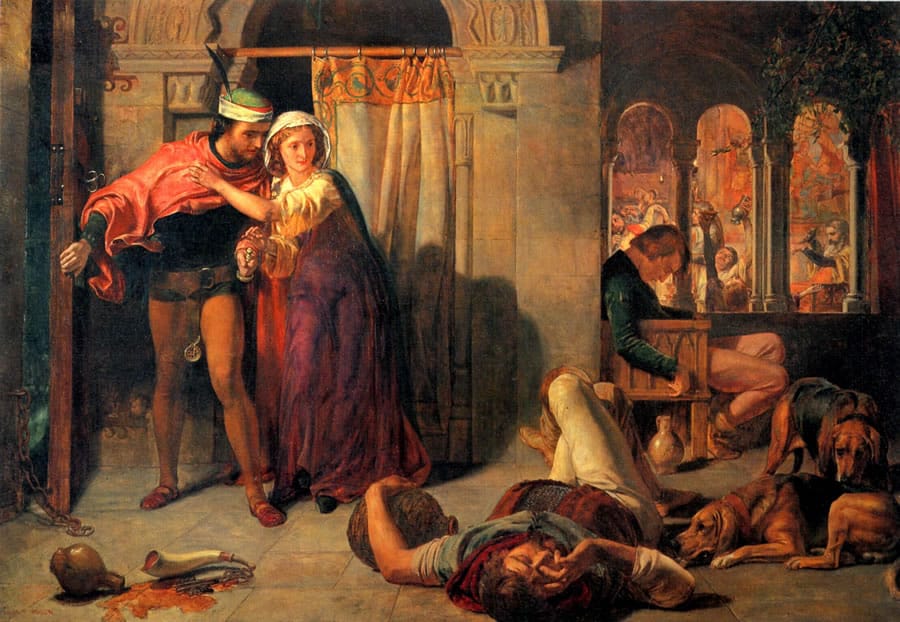
The eve of St. Agnes Essay
In this paper I would like to analyze “The Eve of St. Agnes” poem by John Keats, written in 1819.
Keats wanted to test his poetic imagination; he wanted to penetrate into the world of fairy tales and legends. So a poem, “Eve of St. Agnes” appeared, it was inspired by the works of English Renaissance and works of modern romantic poetry.
As well as “Isabella”, a new poem tells the story of beautiful and selfless love, this love absorbs loving persons without a trace. In frosty winter night in a mysterious medieval castle, which is owned by the bloodthirsty, cruel barons, Madeline and Porphyro joined in love, breaking a thousand dangers.
She hardly escaped from the ballroom to his bedchamber far from annoying fun. There she, following the ancient legends, must undress and lie in bed silently, staring straight ahead and hard thinking about the distant beloved. Then “Visions of love and delight” will come to her in a dream by St. Agnes kindness.
Meanwhile, a young man Porphyro secretly sneaks into the castle of his darling, though he knows that “hundreds of swords” threaten him here, where even the “dogs hate his family.” Penetrated into the Madeleine room before her arrival, Porphyro sees how she performs ceremony in honor of St. Agnes, she lies down praying and fells asleep. With trembling hands, he prepares a feast at her bedside, and then tries this dream comes true. Lovers united by perpetual ties secretly leave “Treacherous castle” with its “barbarian hordes” and run away in the storm and night.
This story is unusually real, it shows life and passion, as fascination of sensual world is postponed into world of imagination – fascinating female beauty, love kindness, moonlight refracted through the bright colors of stained glass, the aroma of the overseas fruit and treats. Meanwhile, the reality is symbolized by “Nightmares” of feasting barons. So the real background transforms in the poem in a series of creepy, grimace distorted visions, and fantasy turns out to be true and alive.
Keats believed to reproduce the true grandeur of the real world, you needed to digress from the concrete forms and then this beauty will shine brighter because it was lit by imagination. Hence, he fills the most fantastic his description by the real wealthy poetic details. According to Keats only the full removal from modernity, which is destructive for arts and sense, can save the love from impoverishment and poetry from falsehood and sad prosaism.
At the same time, trying to reproduce in the poem a sense of immensity, which admires him in the “old masters” works and especially Shakespeare. Unemotional things Keats expelled from his narrative. His heroes are all reduced to their passion, which supersedes everything else, erasing their individuality. In contrast, inspired by Romeo and Juliet, which are bright, expressive characters, persistently struggling, desperately resisting, Porphyro and Madeline slide before us like a great shadow, as pure abstractions of love.
In conclusion, the absence of marked individual traits of the heroes did not prevent Keats to describe them with the visible concrete and lyrical richness. Not for nothing they inspired Pre-Raphaelite artists, which created in mid-century, famous paintings on Keats stories. In a brief history of the young poet, “Eve of St. Agnes” is allocated by a happy harmony of emotional and sensual, plastic and colorful, melodic and rhythmic, the fantastic and the real start. He was himself, wrote with a quick and sure hand.

